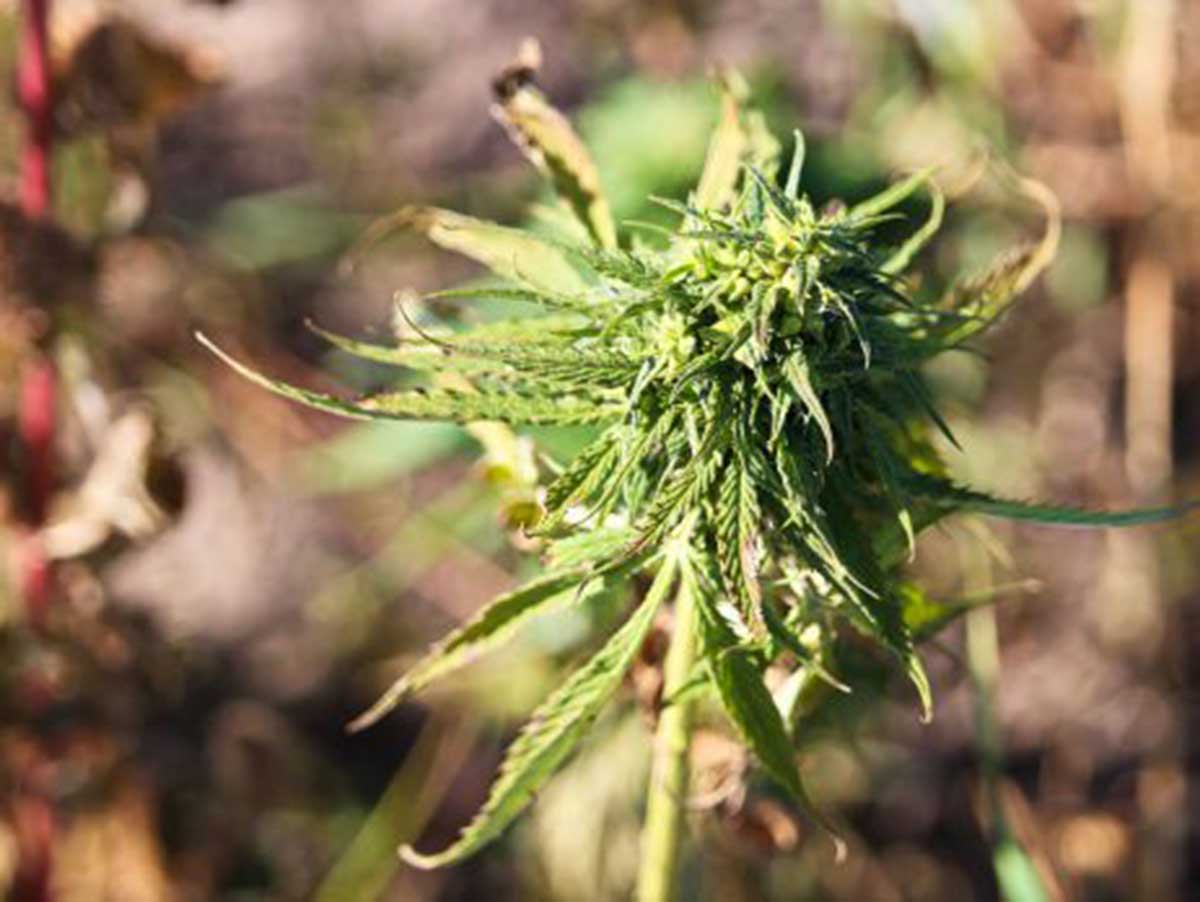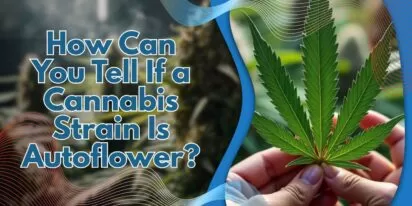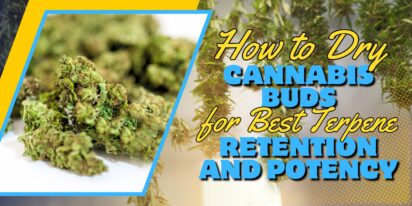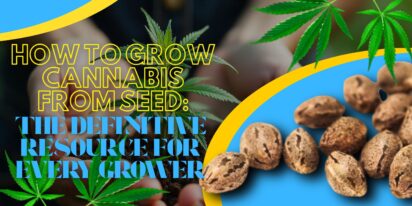Are You 21 Or Over?
YesOr
No By clicking yes, you certify that you are over 21 years old. By using this website, you agree to our legal disclaimer.Table of Contents

You may have heard that autoflowers can’t be cloned. It may be a shame as it is an efficient and economical way of cultivating Cannabis.
Some people said that it might cause stress to the mother plant, and it can slow down development. It may happen as cutting on the stem is made. So these are the concerns of some people when it comes to cloning autoflowers.
Can you guess if it’s just a myth or not at all? Well, this article will show the real deal about this matter.
The process of cloning Cannabis plants is quite interesting. It would start by getting a ‘cutting’ from the chosen mother plant to produce a new plant. The newborn plant would retain the genetics of the mother plant.
Therefore, cloning is the process that would let growers preserve the genetics of the strains with characteristics that they admire. Some of them attract you to its flavor, and some would let you depend on them due to their effects.
Cloning also economically attracts growers as they don’t need to keep on buying Cannabis seeds. As long as they maintain the robust health of the mother plant, they can just get some cuttings to create a homogeneous version of the strain that you desire.
While there are benefits from this process, there may be a possible downside to this. Some view some limitations when it is applied to cloning autoflowers.
Autoflowering strains have a lot of advantages when it comes to Cannabis cultivation. They’re compact-sized weeds that finish quicker than others. So some growers think that it’s a good idea to clone them.
The cutting for cloning is done during the vegetative phase. Then you can place it in a growing medium of your choice and let it grow roots. Some growers would use hormone powder or gel, but it’s not that necessary.
The cuttings can develop the root system in a matter of 10 days. They will transform into plants that are identical to its source.
It’s easier to start with cloning if you want to reproduce the same Cannabis plant. It will let you skip the sensitive seedling period. If you get it from a feminized plant, you will be able to retain the status.
To analyze why some growers don’t want cloning autoflowers, you have to know some of the traits that set them apart from others. As its name suggests, it flourishes automatically by time rather than environmental elements that photoperiod strains are sensitive about.
Photoperiodic strains require a switch of the amount of light when it’s time to shift from the vegetative stage to the flowering stage. This matter is based on evolutionary differences.
Autoflowers are known to have evolved in the northern hemisphere, an area where there’s only a little sunlight in the entire year. It is the setting that made them automatically flower after a particular period.
So it won’t burden Cannabis cultivators to change light for starting the flowering stage, so a decent yield is attained.
Whereas, photoperiodic strains came from areas near the equator. When they are cultivated indoors, they need a light cycle for them to embark on the flowering period as well as seeding. They need to do it to avoid harsh weather so they can continue with survival.
So, how does genetic difference affect the cloning process of Cannabis? You must remember that cloning will result in a plant, which is the exact duplicate of the mother plant. The clone will copy every bit of the mother, including the age when the cutting was made.
The cutting proceeds with the genetic timeline of its mother. It keeps on with the flowering stage despite its size and status of development.
When it comes to autoflowering strains, clone ones will come out as small and underdeveloped with only minimal yield. Cloning is suitable for photoperiodic strains. The cutting taken during the vegetative stage can still grow and flourish within the same period as long as there’s no change in the light cycle.
When the plant arrives at its optimal size, the grower can make changes on the light cycle so the flowering stage can begin.
This explanation shows how cloning is suitable for photoperiod. But it doesn’t say that cloning autoflowers can’t be done.
There are Cannabis growers who have successfully applied cloning with autoflowers. But the yield is only suboptimal. If you want to stick to the main goal of cloning, which is preserving your favorite strain, it will be fine but don’t expect too much during harvest time.
When attempting clone autoflowers, you should get the cutting at the bottom part of the mother plant. The lower branches are believed to be more mature and have more stable hormones than the ones on the top.
Apical meristem is the main terminal stem that receives the signal when it’s time to flower. But it goes downwards, so the signal is brought to the knowledge of the lower branches. Then they prepare for flowering time.
A short window of time happens like just a few hours for sexual features along with the permeation of flowering hormones which spread all over the plant’s tissues. It’s essential to observe your mother plant if it starts to flower as it would tell you that you can get some cuttings.
When you have secured the cuttings from your autoflowers, put them under low-intensity lights. They also need to be in a moist condition to induce rooting.
When the cutting has roots, they can proceed to the vegetative stage. They will reach approximately 80% of the size of their mother. You will then see the harvest. It can also come to the point that the harvest is comparable to the mother plant.
You can try cloning your autoflowering strains, and no one is stopping you. It can be done simply and, of course, successfully. So you can produce a future generation of your favorite strains without the need to buy some autoflower seeds.
Cloning autoflowers still coheres with the main goal of this process. It will produce the same copy of its mother plant.
However, the yield will be minimal amount. But it would be enough to pay off all your efforts and skills you applied in its growth.

Curious about growing weed in a healthy, effective way? Welcome to the realm of weed hydro! This method uses water instead of soil, delivering n

Peyote Zkittlez is a unique cannabis strain that has quickly gained dedicated followers among enthusiasts and patients alike. Its parentage—Zk

As growers, we want strains that work well, are strong, and are of good quality. Autoflowering cannabis strains are a big step forward for both

Pot growers always ask the same basic question: How much weed does a weed plant produce? The answer is complex and depends on a multitude of var

Ever had the room spin after a few hits? You're not alone. Figuring out how to prevent getting dizzy high can make your cannabis experience a wh

Drying cannabis properly is a critical process in preserving the plant's full aroma and flavor and its psychoactive abilities. Tampering with th

Ever caught yourself a bit too high and all of a sudden in need of being normal? Whether you're heading out for munchies or bumping into someone

Looking for sage advice on how not to get pinched with weed without batting an eye? Attempting to protect your stash from gossipy roommates, sno

Nutrient lockout, also known as nutrient binding or chemical antagonism, is a significant issue in cannabis cultivation that negatively impacts

Germination is the most critical initial stage in growing healthy, high-quality cannabis plants. During germination, the dormant seed becomes a
Are You 21 Or Over?
YesOr
No By clicking yes, you certify that you are over 21 years old. By using this website, you agree to our legal disclaimer.
Excellent blog here Also your website loads up very fast What web host are you using Can I get your affiliate link to your host I wish my web site loaded up as quickly as yours lol
Your writing is not only informative but also incredibly inspiring. You have a knack for sparking curiosity and encouraging critical thinking. Thank you for being such a positive influence!
Simply wish to say your article is as amazing The clearness in your post is just nice and i could assume youre an expert on this subject Well with your permission let me to grab your feed to keep updated with forthcoming post Thanks a million and please carry on the gratifying work
Somebody essentially lend a hand to make significantly articles Id state That is the very first time I frequented your website page and up to now I surprised with the research you made to make this actual submit amazing Wonderful task
Your blog is a beacon of light in the often murky waters of online content. Your thoughtful analysis and insightful commentary never fail to leave a lasting impression. Keep up the amazing work!
Thank you for the auspicious writeup It in fact was a amusement account it Look advanced to more added agreeable from you By the way how could we communicate
Your blog is a constant source of inspiration for me. Your passion for your subject matter shines through in every post, and it’s clear that you genuinely care about making a positive impact on your readers.
Your blog is a constant source of inspiration for me. Your passion for your subject matter is palpable, and it’s clear that you pour your heart and soul into every post. Keep up the incredible work!
Your articles never fail to captivate me. Each one is a testament to your expertise and dedication to your craft. Thank you for sharing your wisdom with the world.
Your blog is a testament to your dedication to your craft. Your commitment to excellence is evident in every aspect of your writing. Thank you for being such a positive influence in the online community.
Your writing has a way of resonating with me on a deep level. I appreciate the honesty and authenticity you bring to every post. Thank you for sharing your journey with us.
Your blog is a true gem in the world of online content. I’m continually impressed by the depth of your research and the clarity of your writing. Thank you for sharing your wisdom with us.
Hi i think that i saw you visited my web site thus i came to Return the favore Im attempting to find things to enhance my siteI suppose its ok to use a few of your ideas
Somebody essentially help to make significantly articles Id state This is the first time I frequented your web page and up to now I surprised with the research you made to make this actual post incredible Fantastic job
Usually I do not read article on blogs however I would like to say that this writeup very compelled me to take a look at and do so Your writing taste has been amazed me Thanks quite nice post
Your blog has quickly become one of my favorites. Your writing is both insightful and thought-provoking, and I always come away from your posts feeling inspired. Keep up the phenomenal work!
Every time I visit your website, I’m greeted with thought-provoking content and impeccable writing. You truly have a gift for articulating complex ideas in a clear and engaging manner.
Hey there You have done a fantastic job I will certainly digg it and personally recommend to my friends Im confident theyll be benefited from this site
I have read some excellent stuff here Definitely value bookmarking for revisiting I wonder how much effort you put to make the sort of excellent informative website
Nice blog here Also your site loads up very fast What host are you using Can I get your affiliate link to your host I wish my site loaded up as quickly as yours lol
What i do not understood is in truth how you are not actually a lot more smartlyliked than you may be now You are very intelligent You realize therefore significantly in the case of this topic produced me individually imagine it from numerous numerous angles Its like men and women dont seem to be fascinated until it is one thing to do with Woman gaga Your own stuffs nice All the time care for it up
Your blog is a beacon of light in the often murky waters of online content. Your thoughtful analysis and insightful commentary never fail to leave a lasting impression. Keep up the amazing work!
Your blog is a breath of fresh air in the often stagnant world of online content. Your thoughtful analysis and insightful commentary never fail to leave a lasting impression. Thank you for sharing your wisdom with us.
Your blog is a beacon of light in the often murky waters of online content. Your thoughtful analysis and insightful commentary never fail to leave a lasting impression. Keep up the amazing work!
Usually I do not read article on blogs however I would like to say that this writeup very compelled me to take a look at and do it Your writing style has been amazed me Thank you very nice article
Your writing has a way of resonating with me on a deep level. I appreciate the honesty and authenticity you bring to every post. Thank you for sharing your journey with us.
This hydroponics guide is quite the buzz, seriously! Who knew growing weed without dirt could be so complicated yet potentially rewarding? The breakdown of systems like DWC and NFT is helpful, though I suspect my cat might confuse the air pump for a toy. The idea of cleaner buds is tempting, especially since explaining hydro weed to my non-growing friends might get messy. And the bit about potential dizziness from hydro weed? Perfect, now I have an excuse for why I always stumble a bit after a grow session. Still, the promise of faster grows and higher yields is hard to ignore, even if it means more trips to the pH meter than to the coffee shop. Overall, a cultivating read for the curious grower!